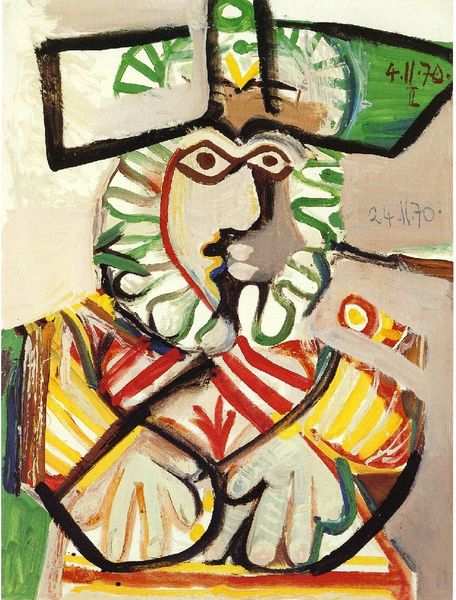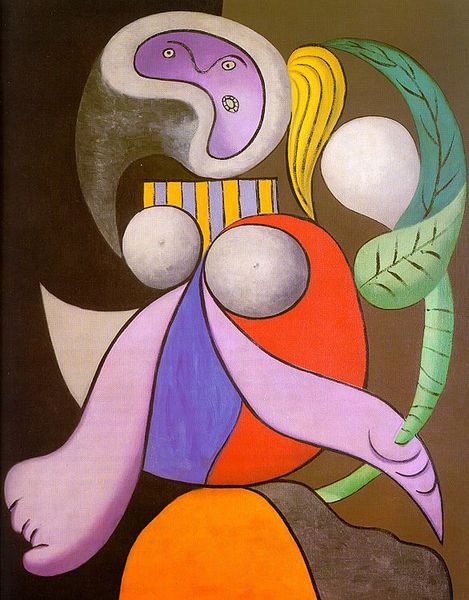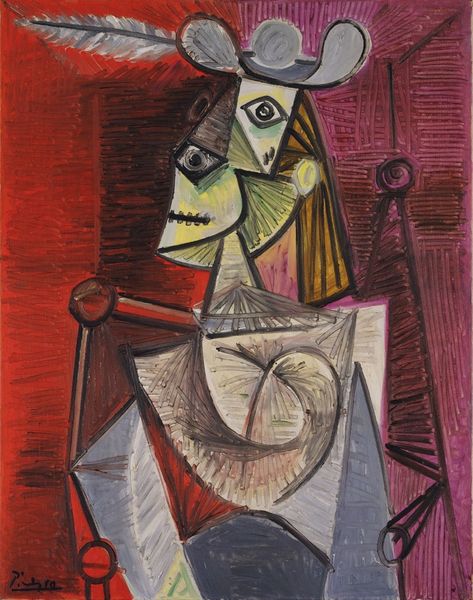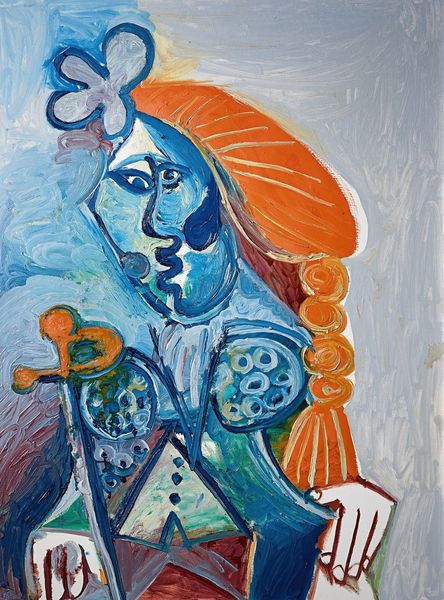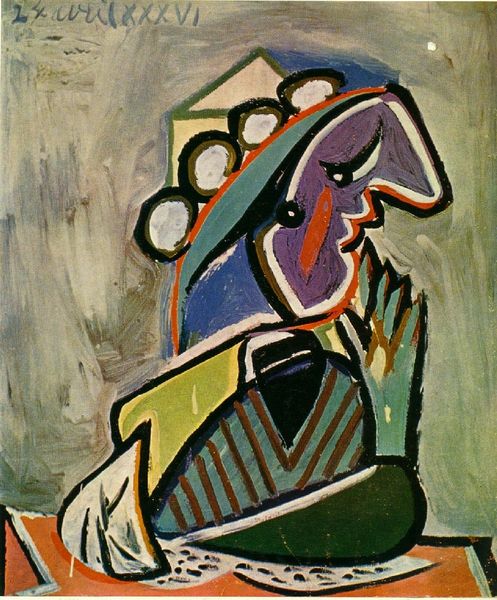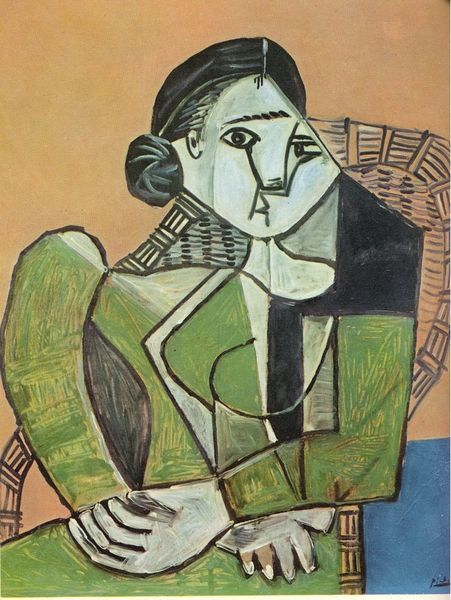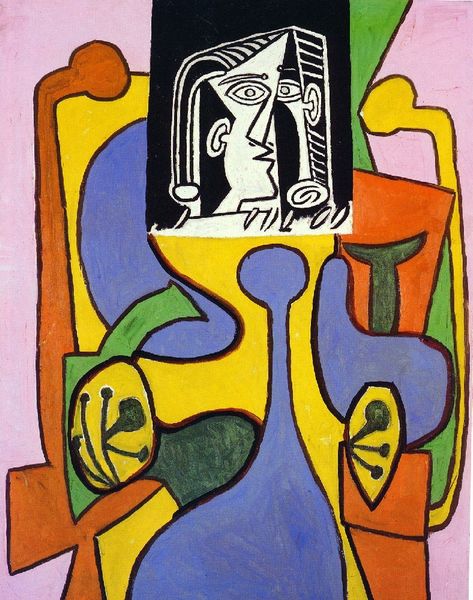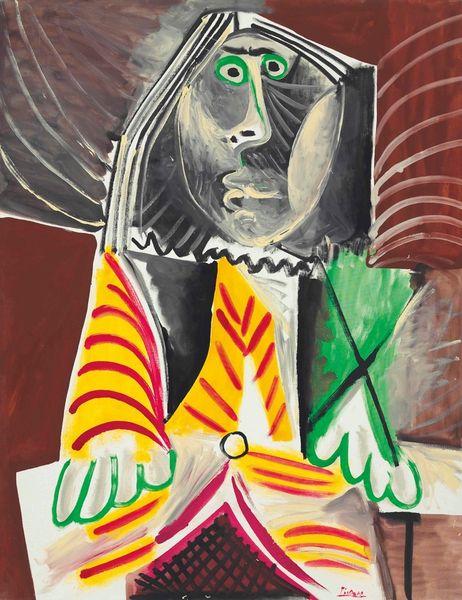
Copyright: Pablo Picasso,Fair Use
Editor: We’re looking at Pablo Picasso’s “Woman sitting in an armchair,” painted in 1962 using oil paint. I am really struck by the bright, almost jarring colors and the fragmented, geometric shapes that form the woman's figure. How would you interpret this work? Curator: Let's begin with the obvious: line, form, and colour. Note how Picasso deconstructs the traditional portrait, dispensing with single-point perspective in favour of presenting multiple viewpoints simultaneously. How do the contours define the figure within the overall picture plane? Do you find it pleasing? Editor: I see that the face is split, almost like two profiles merged into one. The colors are also not naturalistic—bright yellow skin, a blue dress. I do appreciate that it doesn’t look realistic! Curator: Precisely. He's playing with pictorial space, pushing and pulling our perception. The juxtaposition of warm and cool colours contributes to a sense of dynamism, almost a visual vibration. Do you observe the way the background interlocks with the figure, challenging the traditional figure-ground relationship? How does this flattening of space affect your reading of the composition? Editor: I guess it makes the woman feel less like a solid form and more like part of the environment. It’s as though she and her surroundings are equally important. Curator: An astute observation. Notice, too, how the brushstrokes, though visible, are subordinate to the overall structure. It's not about the sensuality of the paint but the intellectual challenge of representation. The question becomes: what IS the minimum a painter must include to call it “woman”? Editor: This has made me consider the portrait as a set of shapes and colors first, and then as a woman, which is quite different than how I’d usually look at a painting. Thank you. Curator: Indeed, and hopefully encourages a new view, both figuratively and literally!
Comments
No comments
Be the first to comment and join the conversation on the ultimate creative platform.

